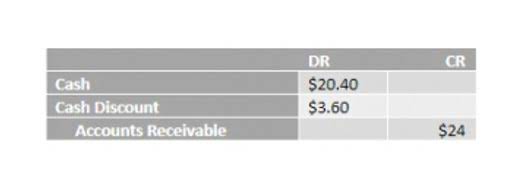
Preferred stock shareholders also typically do not hold any voting rights, but common shareholders usually do. Noncumulative stocks have an advantage over common stocks in that they are a type of preferred stock – shares that tend to be more expensive than common shares and have preference over common shares during dividend payouts. Although noncumulative stocks do not offer the same advantages as cumulative stocks, they still edge past common stocks in terms of investor preferences. Preference shares that include a cumulative clause protect the investor against a downturn in company profits.
- Dividends on the redeemed Series JJ Depositary Shares will cease to accrue on the Series JJ Redemption Date.
- Though the mechanism is different, the end result is ongoing payments derived from an investment.
- If common stockholders are at the bottom of the bankruptcy food chain for recouping at least some of their capital, preferred stockholders are closer to the middle – but not by all that much.
- Thomas’ experience gives him expertise in a variety of areas including investments, retirement, insurance, and financial planning.
- Dividends in respect of the redeemed Series U Depositary Shares will cease to accrue on the Series U Redemption Date.
- A document that discloses important information on bonds or preferred stock.
Preferred Stock Dividend Suspension

No matter how profitable the issuing firm, the holder can never receive more than this fixed sum. Preferred stock often provides more stability and cash flow compared to common stock. Therefore, non cumulative preferred stock investors looking to hold equities but not overexpose their portfolio to risk often buy preferred stock. The company issuing the preferred stock does not receive a tax advantage, however.

Sign up for Investor news and alerts
Legally, it’s considered equity in a company, but it makes payouts like a bond, with regular cash distributions and fixed payment terms. Sometimes dividends or yields on preferred shares may be offered as floating, and fluctuate according to a benchmark interest rate. Although noncumulative stocks offer lower security, they tend to be priced at a lower rate than cumulative stocks, and still offer the advantages of preferred stock. Participatory preference shares provide an additional profit guarantee to shareholders. All preference shares have a fixed dividend rate, which is their chief benefit. Information about a company’s preferred shares is easier to obtain than information about the company’s bonds, making preferreds, in a general sense, perhaps more liquid and easier to trade.
Bank of America Declares Preferred Stock Dividends for Second Quarter 2024 – PR Newswire
Bank of America Declares Preferred Stock Dividends for Second Quarter 2024.
Posted: Mon, 08 Apr 2024 07:00:00 GMT [source]
Part 2: Your Current Nest Egg
- The Fund may invest in US dollar-denominated securities of foreign issuers traded in the United States.
- No matter how profitable the issuing firm, the holder can never receive more than this fixed sum.
- However, investors must also be aware of the potential drawbacks of non-cumulative preferred stock, including the potential for missed dividends and lower priority in liquidation.
- Preferred stock works well for those who want higher yields than bonds and the potential for more dividends compared to common shares.
- As with all investments, the answer depends on your risk tolerance and investment goals.
This preference is significant when it comes to the payment of dividends and voluntary liquidation of assets, but is essential in bankruptcies. During a bankruptcy, preferred stockholders receive first shot at the company’s asset liquidation. Preferred stocks offer greater protection than common stocks in this situation. The Series L dividend is payable on June 17, 2024, to holders of record as of the close of business on May 31, 2024.
What factors should investors consider when investing in non-cumulative preferred stock?
If the company is liquidated, participating preferred shareholders may also have the right to be paid back the purchasing price of the stock as well as a pro-rata share of remaining proceeds received by common shareholders. Non-cumulative preferred stock does not issue any omitted or unpaid dividends. If the company chooses not to pay dividends in any given year, the shareholders of the non-cumulative preferred stock have no right or power to claim such forgone dividends at any https://www.bookstime.com/articles/audit-risk-model time in the future. Cumulative preferred stock includes a provision that requires the company to pay shareholders all dividends, including those that were omitted in the past, before the common shareholders are able to receive their dividend payments. These dividend payments are guaranteed but not always paid out when they are due. Unpaid dividends are assigned the moniker “dividends in arrears” and must legally go to the current owner of the stock at the time of payment.
What is Noncumulative?
However, the board of directors feels that there is not sufficient cash flow in the third quarter to pay a dividend. Since the preferred stock is noncumulative, the company has no obligation to ever pay the missing dividend, and the holders of those shares have no claim against the company. As with convertible bonds, preferreds can often be converted into the common stock of the issuing company. This feature gives investors flexibility, allowing them to lock in the fixed return from the preferred dividends and, potentially, to participate in the capital appreciation of the common stock. The seniority of preferreds applies to both the distribution of corporate earnings (as dividends) and the liquidation of proceeds in case of bankruptcy.

If a company is profitable, preferred shareholders collect dividends before common stockholders. Among the downsides of preferred shares, unlike common stockholders, preferred stockholders typically have no voting rights. And although preferred stocks offer greater price stability – a bond-like feature – they don’t have a claim on residual profits. That means preferreds don’t share in the potential for price appreciation that common stocks do.
Ask Any Financial Question
- Market conditions and interest rates can also affect the performance of non-cumulative preferred stock.
- (7) Ownership is held in the form of depositary shares, each representing 1/25th interest in a share of preferred stock, paying a quarterly cash dividend, if and when declared.
- He is a CFA charterholder as well as holding FINRA Series 7, 55 & 63 licenses.
- If a company goes bankrupt, then the different securityholders in that company will have claim to the company’s assets.
- It also has a defined maturity date and therefore has more certainty regarding cash flows.
